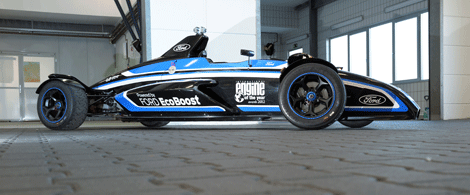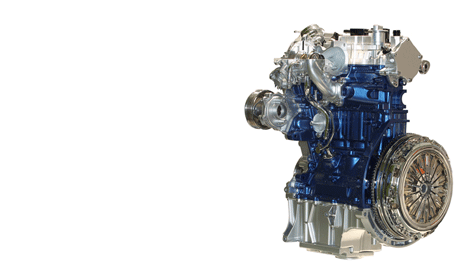
The new EcoBoost engine is powerful enough for racing, but economical enough for a family car
Design has always sped into action to adapt products for the tightening of belts and squeezing of budgets – but I find that this type of the design is as impressive as a brand new product.
The tinkerers at Ford’s UK engineering plant have released the 1.0-litre EcoBoost engine, with a cylinder block that can fit onto a sheet of A4 paper but is still able to deliver up to 125PS and 170Nm peak torque (with 200Nm overboost), giving it the highest power density of any Ford production engine to date, and rivalling a 1.6-litre engine.
Strapped into a Formula Ford chassis it goes like stink around a race track, but this engine is also going to be available in a much heavier family sedan, the new Ford Mondeo, and will still give the driver the required power.

Small enough to fit on an A4 sheet of paper, the 1.0-litre engine rivals a 1.6-litre for power and torque
During development the UK engineers focused on improving thermal efficiency and reducing friction of the engine’s internal moving parts, especially during the initial warming-up period after starting.
It’s not going to change the world overnight, but design and engineering programs like Ford’s EcoBoost will eventually lead to greater changes in car design.
There’s no doubt that as consumers we’re still continuing toward smaller cars with smaller engine bays giving greater passenger space without compromising performance – while lessening the cost of motoring and the negative effects it has on the environment.
The size of cars impact on the design of many different things – parking spaces, petrol stations, road widths and inner-city congestion – by changing the engine the designers and engineers will change a lot more than our fuel consumption.






